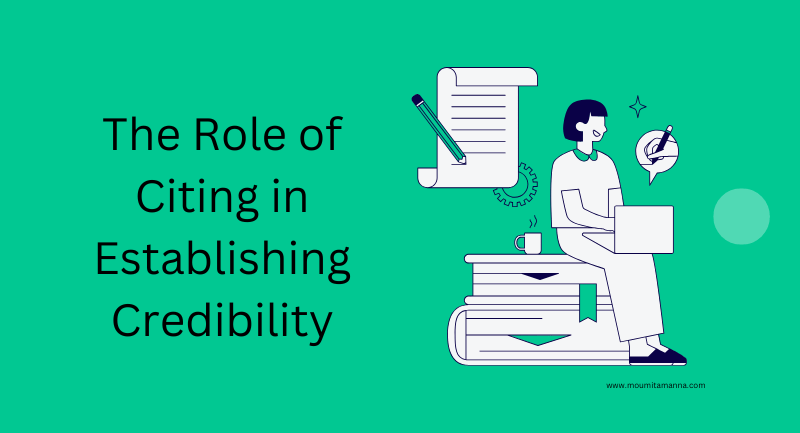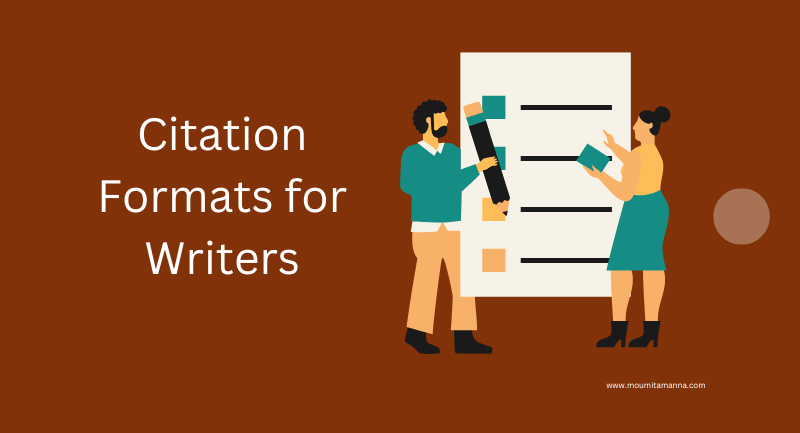Citing sources is one of the cornerstones of ethical writing, yet many writers often wonder when it’s necessary to do so. If you’ve ever questioned whether to include a citation in your content, you’re not alone. Proper attribution not only safeguards your credibility but also keeps you on the right side of copyright law. This blog will guide you through the situations where citing is essential, clearing up common misconceptions, and providing actionable tips for seamless integration.
Why Is Citing Sources Important in Writing?
Citing sources is crucial for building trust with your audience, avoiding plagiarism, and acknowledging the original work of others. It ensures that your content is credible, ethical, and respectful of intellectual property.
The Role of Citing in Establishing Credibility
Citing your sources isn’t just about following rules; it’s about showing respect for others’ work while making your own content more trustworthy. When done correctly, it strengthens your arguments and builds trust with your audience.

1. Building Trust:
Proper attribution reassures your audience that your claims are well-supported by reputable sources. Think of it as a way to wear your credibility badge proudly! Example: Backing up a health claim with research from a medical journal shows you’re reliable.
2. Avoiding Plagiarism:
Nobody wants to end up on the wrong side of a copyright dispute. Citing sources ensures that you’re not unintentionally passing off someone else’s work as your own. Plagiarism scandals have ended careers, don’t let it happen to you.
3. Acknowledging Original Work:
Every creator deserves credit. A simple citation shows respect for the time and effort someone put into their research or creative work. Treat others how you’d want your hard work to be treated.
By citing sources, you don’t just protect yourself, you become a more credible and ethical writer.
When Should Writers Cite a Source?
Knowing when to cite is one of the most important skills for a writer. It’s not always about playing it safe; it’s about being fair and transparent with your readers.
Situations Requiring Source Attribution
- Direct Quotes: Using someone’s exact words? Don’t forget those quotation marks and a citation. It’s like saying, “Here’s what they said, not me.” Example: “The early bird catches the worm” – as Benjamin Franklin famously stated.
- Paraphrased Information: Just because you’ve reworded it doesn’t mean it’s now yours. Give credit where it’s due. Rule of Thumb: If it’s not common knowledge and you didn’t create it, cite it.
- Data and Statistics: Numbers don’t lie, but they also don’t come from thin air. Cite the studies or reports you’re referencing. Visual Aid: Use a pie chart to show how much of your content is data-driven versus opinion-based.
- Expert Opinions: Mentioning insights from thought leaders? Name-drop with a citation for added credibility. Tip: Linking directly to their work is a great way to show transparency.
| Situation | Citation Required? | Example |
| Direct Quote | Yes | “80% of marketers use social media” |
| Paraphrased Ideas | Yes | Social media is widely used by marketers. |
| Common Knowledge | No | The Earth revolves around the Sun. |
- Multimedia Content: Found the perfect image or infographic? Always credit the creator—it’s not just polite; it’s required.
When in doubt, cite! It’s better to over-acknowledge than to risk accusations of plagiarism.
Common Misconceptions About Citing
Citing might sound straightforward, but misconceptions often trip up even the most seasoned writers. Let’s clear the air and address some common misunderstandings, so you can cite confidently and avoid unnecessary pitfalls.
Do I Always Need to Cite Common Knowledge?
One frequent question is whether common knowledge requires citations. The answer is no, but understanding what qualifies as common knowledge is key.
| Common Knowledge Examples | Citation Needed? |
| The sky is blue. | No |
| 70% of people prefer coffee over tea. | Yes |
If your audience is unlikely to know it or if it involves statistics, always cite.
How to Properly Cite Sources
Don’t let the process of citing scare you off! Once you understand the basics, integrating citations becomes second nature.
Citation Formats for Writers
The way you cite depends on the type of content and its audience. Here are the most common citation styles:

APA (American Psychological Association) Style:
Frequently used for academic and scientific content. Perfect for articles heavy on data and stats.
- Who Uses It?
APA is predominantly used in academic, scientific, and technical fields, such as psychology, education, sociology, and other social sciences. - What are the Key Features?
It emphasizes the author and the date of publication in its in-text citations, which makes it easy for readers to identify the timeliness of the research. For example, you might see citations like(Smith, 2020)in the text. - Why Use It?
This style is highly structured, ensuring clarity and uniformity, particularly for works involving statistical data, research findings, and peer-reviewed studies. The focus on recency is crucial in these disciplines, as newer research often builds upon or challenges older studies. - Where It’s Commonly Applied?
Journals, research papers, white papers, and professional reports in social sciences or healthcare.
MLA (Modern Language Association) Style:
Ideal for humanities and literary content. Think essays, books, and art critiques.
- Who Uses It?
The MLA format is widely adopted in the humanities, including literature, philosophy, history, and the arts. - Key Features:
MLA prioritizes the author and page number for in-text citations, such as(Smith 45). This allows the audience to quickly locate the specific part of a text being referenced, which is important when analyzing quotes or passages. - Why Use It?
This style is particularly well-suited for essays, books, and critiques where close reading of texts is essential. It encourages precision in citing specific passages while accommodating a more flexible structure for diverse types of sources, such as poetry, novels, and artwork. - Where It’s Commonly Applied:
College essays, literary criticism, books, art critiques, and cultural studies.
Chicago (Chicago Manual of Style):
Often employed in historical or journalistic works. Great for detailed bibliographies.
Who Uses It?
The Chicago style is often used by historians, journalists, and writers of non-fiction books, especially in fields that rely heavily on historical documentation or archival research.
Key Features:
Chicago offers two systems:
- Notes and Bibliography: Suitable for works with extensive source documentation, such as history books. Footnotes or endnotes provide detailed information about sources, with a bibliography at the end for comprehensive reference.
- Author-Date: Similar to APA, this system is used in sciences and social sciences. It features in-text citations like
(Smith 2020, 45)and a reference list.
Why Use It?
Chicago is versatile, accommodating complex bibliographies and extensive citations. It’s ideal for providing context and detailed background information, ensuring readers have all the tools needed to trace original sources.
Where It’s Commonly Applied:
Historical research, journalism, non-fiction books, academic papers in humanities, and publications requiring detailed bibliographic documentation.
| Citation Style | Best For | Example |
| APA | Academic, Research | (Author, Year) |
| MLA | Humanities, Literature | Author (Page Number) |
| Chicago | History, Journalism | Author, Title, Year |
Choosing the Right Style
When selecting a citation style, writers should consider the following:
- The Audience: Academic readers often expect APA or MLA, while general readers of historical or journalistic works may be more familiar with Chicago.
- The Content-Type: Research-heavy content benefits from APA, while literary or humanities-focused pieces align better with MLA. Historical or extensively sourced works shine with Chicago.
- The Purpose: If your goal is to highlight recent research, APA’s date-focused citations are ideal. For works emphasizing textual analysis, MLA is best. If you’re documenting historical sources or archival data, Chicago provides unmatched flexibility.
By understanding these distinctions, writers can ensure their citations not only enhance credibility but also meet the expectations of their intended audience.
Practical Tips for Seamless Integration
- Hyperlink: In online writing, simply link to the original source—it’s modern and user-friendly.
- Blend Naturally: Don’t disrupt the flow of your content. Let citations integrate smoothly. Example: According to Harvard’s study, 60% of users prefer visual content.
- Stay Organized: Keep a running list of your sources while researching to avoid scrambling later.
Use citation generators to save time and ensure accuracy.
Tools to Simplify the Citing Process
Citation doesn’t have to be a hassle, especially when technology is on your side. Here’s how to make the process quick and painless.
Top Tools for Writers to Avoid Plagiarism
- Grammarly: More than just grammar checks—it highlights unoriginal content and suggests citations.
- EasyBib: Perfect for creating citations in any format, especially for students and bloggers.
- Turnitin: Ideal for ensuring academic integrity.
| Tool | Best For | Free Version Available? |
| Grammarly | Plagiarism Detection | Yes, with limited features. |
| EasyBib | Citation Formatting | Yes |
| Turnitin | Academic Writing | No |
Pro Tip: Bookmark these tools—they’ll become your best friends!
Conclusion
Citing sources is an essential practice for any writer, ensuring your content is credible, ethical, and legally compliant. Whether you’re quoting an expert, referencing data, or paraphrasing ideas, knowing when to cite makes all the difference.
By adopting proper citation practices, you not only protect your reputation but also contribute to a culture of integrity in writing. Start implementing these tips today and elevate the quality of your content.
